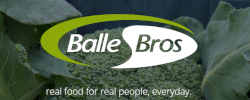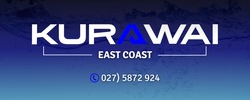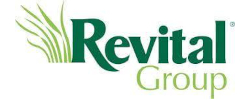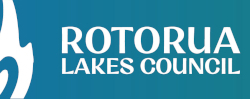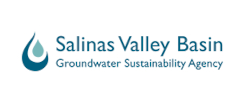PROJECTS
Corporate kiwifruit orchard. BOP
- Had recently drilled to 350m – well was dry.
- Appointed Aquifer Mapping.
- Orchard was mapped.
- The new well produces 30,000 litres per hour, is far better located and
Info
Corporate vegetable grower
- Client concerned about drying conditions and future weather projections.
- Appointed Aquifer Mapping to map 4 farms.
- Drillable targets located on all 4 properties.
- Client now ready and armed to drill when / if they need to.
Info
Large dairy unit – Southland
- 800 cow herd.
- Two wells drilled.
- Both very low producers (combined 1 litre per second and needed recharge days).
- Aquifer Mapping appointed.
- 400 ha mapped.
- New well site located.
- When drilled the new well produces a huge supply of clean artesian water.
- Client now considering irrigation plans.
Info
NZ Council
- Large NZ City Council concerned about the sustainability of their existing bore water supplies and also wanting to locate new locations to drill should the need arise in the future.
- Was also concerned to understand the extent of liquefaction under the city.
- Also wanted to clarify drilling targets on both sides of a known major fault line running through the area.
Info
Kiwifruit Orchard Developments
Aquifer Mapping has been called in to three new kiwifruit developments latterly after the owners had drilled dry wells. In one case two 350m deep wells had been drilled and had failed. Aquifer Mapping located 3 good new well sites and 3D modelled the farm. The model showed exactly how the aquifers are working and where the high flow area is.
The second job was where a farmer had drilled to 180m depth and the well was dry so was plugged and abandoned. Aquifer Mapping came in and mapped the area and found an excellent supply of top-quality water at 45m depth.
Info
Corporate Maori Farming Operation.
Aquifer Mapping were approached by a large iwi dairy farming operation to locate a new wash down and stock water supply for one of their large dairy farming operations. They had already drilled 4 dry holes. Aquifer Mapping came on to the farm and mapped the general area. We located an excellent supply of water just 80m away from where the last dry hole had been drilled. The new well produces 20 cubic metres of water per hour – more than enough for the clients needs.Show
NSW –Council – Australia
The 2019 Australian drought put immense pressure on rural town water supplies. Several towns were transporting water in via truck and trains. Aquifer Mapping, through its Australian associate contractor were called in to assist. The council had had already 7 exploration wells drilled but sadly all 7 were dry. The Aquifer Mapping technology was used to site an 8th well and the new well produced excellent supplies of clean water and saved the cities water supply.Show
Salinas – California
Aquifer Mapping have done a lot of work in California. The most recent was a highly productive strawberry farming ranch. The ranch was accessing irrigation water from a deep (700m) aquifer and the client wanted to know if the take was sustainable and environmentally responsible. The deep aquifer was mapped and modelled, and the estimated bulk water quantification and hydraulic conductivity were provided to the client. The models were remarkably interesting in that they showed the flow patterns (paleochannels – old rivers) within the deep zones – something that has never been seen previously. Of equal interest was the information showing that there was no saline water under this ranch.Show
Geothermal
Several hot water geothermal water wells have been sited in New Zealand. These are being used to heat large scale pool complexes and historic buildings.Show
Geotech and Asbestos
A large commercial building in Auckland was recently mapped. This property was located on a basalt formation. Aquifer Mapping mapped the geology under the site by entering the old building and mapping through the existing concrete basement floor. This allowed the property owner to:- Clearly understand the geology under the site.
- It allowed them to file their new building plans with Council whilst the old building was still standing.
- The Aquifer Mapping survey determined that one end of the property’s basalt geology was far more fractured than the other end. That information allowed the owners architect to switch the planned basement parking of the new build from the original planned area to the fractured area. That of course saved the owner time and money as the fractured basalt was a lot easier to remove than the solid volcanic basalt. It also proved to be a huge environmental upside given the quicker time required to move the unconsolidated basalt verse the solid basalt.
- When the 3D model of this sit was viewed by senior Aquifer Mapping staff a clear unusual looking area was visible directly under the middle area of the old buildings slab.
- This had not previously been seen by Aquifer Mapping.
- Upon the demolition and removal of the old buildings floor area, a large pit area of buried asbestos was located.
- Aquifer Mapping are now developing a recognition algorithm to recognize other cases of buried asbestos.
Show
Neil Rogers
My name is Neil Rogers and I am farming on the East Coast. People have previously told me that I would be wasting my time and money drilling a well at the top of the hill on my property (160m above sea level). Those comments were based around the papa base rock we have here in Gisborne. I have been farming this land for 40 years and I knew that a lot of water came out of the hill during the year. I was introduced to the Aquifer Mapping team and engaged them to come on site and locate and map any aquifers. The results were favorable and proved my belief that there is water in the hill. We went ahead and drilled a well. This is an excellent well and produces 8000 litres per hour, year round, of top quality water. We have placed a solar pump in the well and now distribute good clean trough water throughout the farm. Worth noting is the logistics of having this supply up at the highest location on my farm as that has saved us a lot of money as everything is gravity fed. Coming out of the recent 2019 drought this new water supply made my farming operation a lot easier and safer than having to rely on the previous dam water supply. Neil Rogers – Gisborne. 0274996424.Show
Whakatane District Council
My name is Jim Finlay and I am the Manager of Capital Assets for the Whakatane District Council. We have used the services of Aquifer Mapping on several exploration sites for both Whakatane town water supply and our outer lining smaller town new water supplies. Our district is extremely challenging from natural volcanic geology. We are faced with issues such as the natural occurrence of arsenic in our surface and shallow systems, warm geothermal and several high-pressure fault line driven artesian systems. We have found the Aquifer Mapping team to be excellent to deal with and their technology has certainly added value to our situation. Jim Finlay – Whakatane District Council.Show


